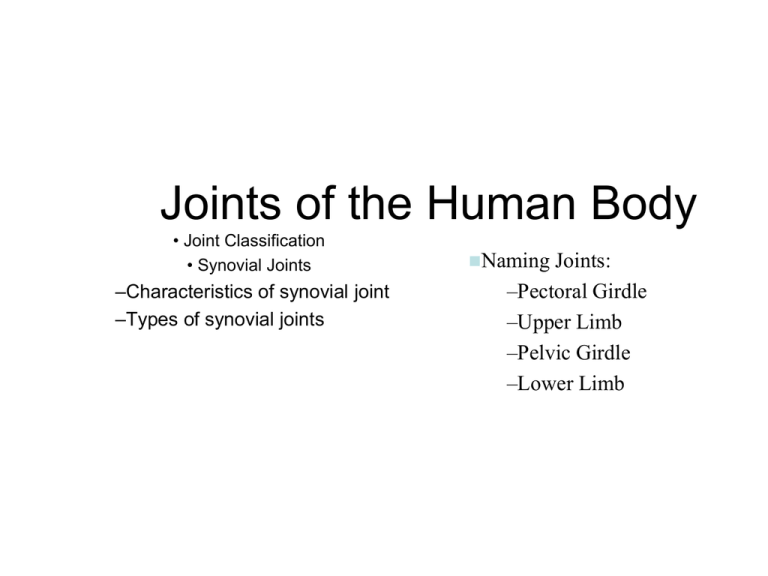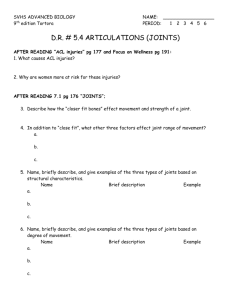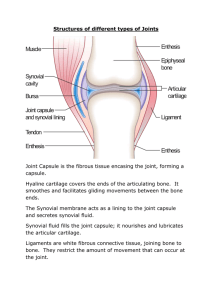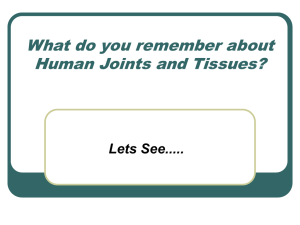Joints of the body - Mr. Ames' Website
advertisement

Joints of the Human Body • Joint Classification • Synovial Joints –Characteristics of synovial joint –Types of synovial joints Naming Joints: –Pectoral Girdle –Upper Limb –Pelvic Girdle –Lower Limb • Joint is a point of connection between two bones • Strands of connective tissue, ligaments, hold the bones together and ensure the stability of joints Joint Classification • Joints are classified according to their motion capabilities: – Synarthroses • Immovable – Amphiarthroses • Slightly movable – Diarthroses • Allow the greatest amount of motion Joint Classification Cont’d • Joints are further classified by the material that joints them: – Fibrous joint • Allow no movement • E.g. sutures of the scull – Cartilaginous joints • Allow limited movement • E.g. intervertebral discs – Synovial joints • Allow large range of movements • E.g. hip joint Characteristics of Synovial Joints • Hyaline cartilage – A protective layer of dense white connective tissue that covers the ends of the articulating bones • Joint cavity • Synovial membrane – Covers joint cavity, except over the surfaces of the articular cartilages – Secretes the lubrication fluid • Synovial fluid – Lubricates the joint • Capsule – May or may not have thickenings called intrinsic ligaments • Extrinsic ligaments – Support the joint and connect the articulating bones of the joint Types of Synovial Joints • There are three basic types of synovial joints: – unilateral (rotation only about one axis) – biaxial joints (movement about two perpendicular axes) – multiaxial joints (movement about all three perpendicular axes) Types of Synovial Joints Cont’d • Synovial are further classified into: 1. Hinge Joint 2. Pivot Joint 3. Condyloid Joint 4. Saddle-shaped joint 5. Ball and Socket Joint 6. Plane Joint 1. Hinge (Ginglymus) Joint • Uniaxial • Has one articulating surface that is convex, and another that is concave • E.g. humero-ulnar elbow joint, interphalangeal joint Pivot Joint • Uniaxial • E.g. head of radius rotating against ulna Condyloid (Knuckle) Joint • Biaxial (flexion-extension, abductionadduction) • The joint surfaces are usually oval • One joint surface is an ovular convex shape, and the other is a reciprocally shaped concave surface • E.g. metacarpophalangeal joint Saddle Joint • Biaxial (flexion-extension, abductionadduction) • The bones set together as in sitting on a horse • E.g. carpometacarpal joint of the thumb Ball and Socket Joint • Multiaxial (rotation in all planes) • A rounded bone is fitted into a cup=like receptacle • E.g. shoulder and hip joints Plane (Gliding) Joint • Uniaxial (permits gliding movements) • The bone surfaces involved are nearly flat • E.g. intercarpal joints and acromioclavicular joint of the vertebrae






